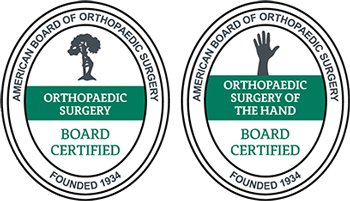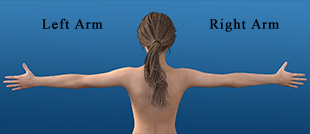Intersection Syndrome
What is Intersection Syndrome?
Intersection Syndrome is a type of tenosynovitis resulting in pain to the lower forearm, usually a few inches from the wrist. The two muscles that control the thumb originate in the forearm, intersecting two wrist tendons before connecting to the thumb. Tendons are thick, rope-like structures that connect muscle to bone. Each tendon is covered by a smooth, slippery tenosynovium which allows the tendons to glide freely over the surrounding tissues. Activities that involve frequent wrist movements can lead to inflammation of the tenosynovial lining known as tenosynovitis. Intersection Syndrome is sometimes confused with the more common De Quervain’s Tenosynovitis which causes pain to the radial aspect of the wrist and forearm just below the thumb and closer to the hand.
What causes Intersection Syndrome?
Tennis, skiing, rowing and weight lifting are all common culprits. In fact, any activity that requires the wrist to repeatedly move downward toward the thumb can lead to Intersection Syndrome. This motion causes the muscles and tendons in the wrist to rub against one another producing irritation and swelling. As the inflammation progresses, the tendons can no longer glide easily.
What are the symptoms of Intersection Syndrome?
The most commonly reported symptom is pain to the wrist or forearm aggravated by flexion or extension. Tenderness or swelling at the intersection point may be present. Occasionally, patients report squeaking or creaking (known as crepitus) with movement of the affected wrist.
How is Intersection Syndrome diagnosed?
In general, physical examination along with a review of symptoms is all that is needed for diagnosis. The challenge is determining if the pain is a result of Intersection Syndrome or de Quervain’s Tenosynovitis, as the cause is so similar. The primary distinguishing factor is the location of pain. Ultrasound or MRI may be used to assess the internal structures of the wrist if physical examination is inconclusive.
How is Intersection Syndrome treated?
Non-Surgical
As with most overuse injuries the first course of action in to limit or eliminate the activities that cause symptoms. It is important to maintain a neutral alignment of the wrist and forearm whenever possible. A thumb-spica splint can help with this by immobilizing the lower thumb and wrist joints. Ice treatments and over-the-counter medications, such as aspirin and ibuprofen, can help reduce pain and inflammation.
If these interventions fail to adequately relieve symptoms, your doctor may administer and injectable steroid such as cortisone to decrease swelling and pain. Cortisone is an extremely effective anti-inflammatory agent. However, the effects work best in the early stages of injury and is temporary, lasting a few weeks to months.
Surgical
On the occasion that conservative treatments fail surgery may be indicated to provide relief from symptoms. A minimally invasive tendon release operation can usually be performed on an outpatient basis. The procedure begins a small incision over the intersection site to expose the involved muscles and tendons. Once the inflamed tendons are identified the surgeon carefully removes the irritated tenosynovium and releases the tendon sheath. The skin is then sutured together and a surgical dressing in placed.
Rehabilitation generally consists of four to six weeks of physical or occupational therapy with full recovery in several months.
How can Dr. Knight help you with Intersection Syndrome?
See Dr. Knight, one of the best hand surgeons in Dallas and see if he can help you live a more pain free life. Come to our Southlake hand and wrist center or Dallas Fort-Worth friendly office location.
Frequently Asked Questions:
How can you test for intersection syndrome?
Because the tissue involved with intersection syndrome is all soft tissue, x-rays are not an effective imaging test to diagnose the condition, but soft-tissue imaging like MRI can be integral in determining a precise diagnosis, in addition to physical examination by the doctor to find out the exact level of pain you are suffering, as well as the affected area and any related systems that may have become affected as collateral damage from the syndrome.
Do injections help cure intersection syndrome?
One very common non-surgical treatment for intersection syndrome is the injection of corticosteroids into the affected area, but this is not a permanent cure. The effects of the injection will greatly relieve pain and discomfort but are temporary and are not a long-term solution to the condition, as the underlying problems will continue to develop while masked by the steroids, and if those are left untreated then the condition will continue to deteriorate until surgery becomes necessary.
What about other non-surgical treatments?
In some cases, the use of kinesiology tape on the affected limb can be an effective splinting technique to reduce the crepitus and discomfort caused by intersection syndrome. The tape acts in the same way as a splint or brace, but still allows you to engage in some daily activities that a larger and bulkier device might not. At home resting and icing is very important for early treatment of the condition. At least a week of constant resting of the tendons will help to stave off the development of full blown intersection syndrome.
(817) 382-6789
Disclaimer
HandAndWristInstitute.com does not offer medical advice. The information presented here is offered for informational purposes only. Read Disclaimer

























